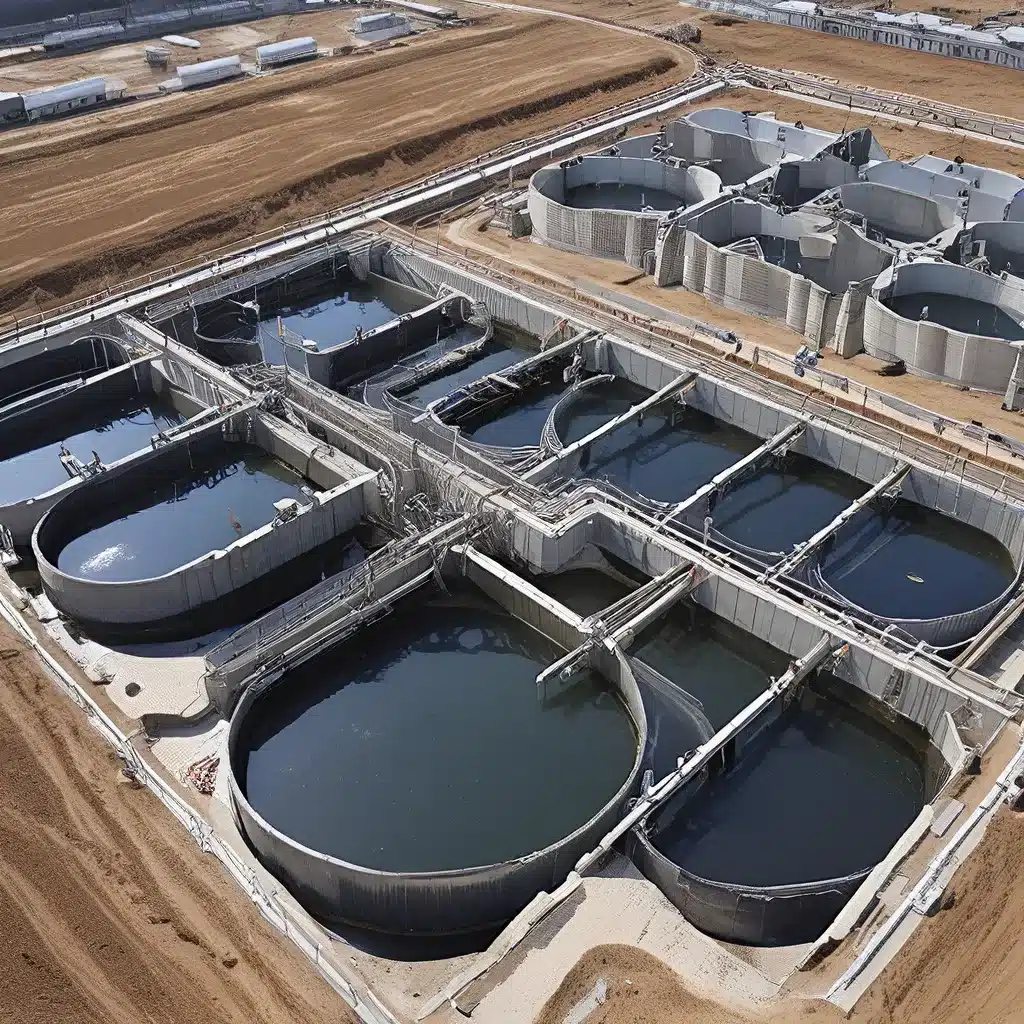
Unlocking the Power of Wastewater: A Journey in Energy Efficiency
As I delve into the world of wastewater treatment facilities, I can’t help but be amazed by the sheer complexity and importance of these unsung heroes of our infrastructure. These facilities are the silent workhorses that toil away, day and night, to ensure that the water we flush, shower with, and use for countless daily tasks is cleaned, purified, and returned to the environment in a sustainable manner. But hidden beneath the murky waters of wastewater management lies a treasure trove of untapped potential – the opportunity to optimize energy efficiency and unlock a new era of environmental stewardship.
Navigating the Challenges of Wastewater Treatment
Wastewater treatment facilities face a multitude of challenges in their quest for energy efficiency. From maintaining strict regulatory compliance to managing ever-fluctuating flow rates and load variations, these facilities must navigate a labyrinth of obstacles to ensure their operations run smoothly and efficiently. It’s like trying to navigate a ship through a raging storm, with the waves of regulation and the currents of changing demand constantly threatening to throw you off course.
As the Commonwealth of Kentucky has recognized, one of the key strategies in addressing these challenges is through the optimization of wastewater treatment plants. By implementing targeted optimization programs, facilities can not only lower their nutrient levels and comply with environmental regulations, but they can also unlock significant energy and cost savings.
Diving into the Power of Optimization
Optimization is the art of finding the sweet spot – the perfect balance between competing priorities and constraints. In the world of wastewater treatment, it’s about identifying and implementing low-cost, high-impact measures that can dramatically improve energy efficiency without compromising the quality of the treatment process.
As the Tennessee Department of Environment and Conservation has demonstrated, optimization can take many forms, from fine-tuning equipment and processes to implementing innovative technologies and operational strategies. It’s like a treasure hunt, where the facility operators are the intrepid explorers seeking out hidden gems of efficiency that can transform their operations.
One of the most effective optimization strategies is the implementation of energy audits. These comprehensive assessments dive deep into a facility’s energy consumption patterns, identifying areas where energy waste can be reduced and opportunities for greater efficiency can be unlocked. It’s like peeling back the layers of a complex system, revealing the hidden inefficiencies that have been quietly siphoning away precious resources.
Unlocking the Potential: Case Studies in Energy Optimization
But the beauty of optimization is that it’s not just about theory – it’s about tangible, measurable results. As the Reddit community has discussed, optimizing water storage strategies can be a game-changer for wastewater treatment facilities, allowing them to smooth out flow variations, minimize energy consumption, and maximize the reuse of treated water.
One facility that has reaped the rewards of optimization is the Anytown Water Reclamation Plant. By implementing a comprehensive optimization program, the facility was able to reduce its energy consumption by a staggering 20%, all while maintaining its strict compliance with environmental regulations. It’s a testament to the power of innovation and the relentless pursuit of efficiency.
Another success story comes from the Riverdale Water Treatment Plant, which tackled the challenge of nutrient removal head-on. By optimizing its nutrient reduction processes, the facility was able to significantly lower its nutrient levels, contributing to the ongoing efforts to address the devastating Gulf Hypoxia issue in the Gulf of Mexico. It’s a shining example of how wastewater treatment facilities can be powerful partners in the fight for environmental sustainability.
Collaboration and Innovation: The Keys to a Sustainable Future
But the journey towards energy optimization is not one that wastewater treatment facilities must undertake alone. Organizations like Inland Waters Inc. are leading the charge, providing comprehensive solutions and expert guidance to help facilities unlock their full potential.
Through collaborative efforts and the sharing of best practices, facilities can learn from each other’s successes and failures, accelerating the pace of innovation and transformation. It’s like a relay race, where each facility passes the baton of knowledge to the next, pushing the boundaries of what’s possible in the realm of wastewater treatment.
Embracing the Future: A Sustainable Wastewater Ecosystem
As we look to the future, the possibilities for energy optimization in wastewater treatment facilities are truly boundless. With the continued advancement of technology, the emergence of innovative operational strategies, and the unwavering commitment of dedicated professionals, these facilities are poised to become the beacons of sustainability that our communities deserve.
It’s an exciting time to be in the wastewater industry, where the challenges of today are the opportunities of tomorrow. By unlocking the power of optimization, we can transform these facilities from energy-guzzling behemoths into efficient, environmentally-conscious partners, paving the way for a future where the water we use is not just cleaned, but celebrated as a precious and renewable resource.
So, let’s dive in, roll up our sleeves, and get to work. The future of our water, our communities, and our planet depends on it.


